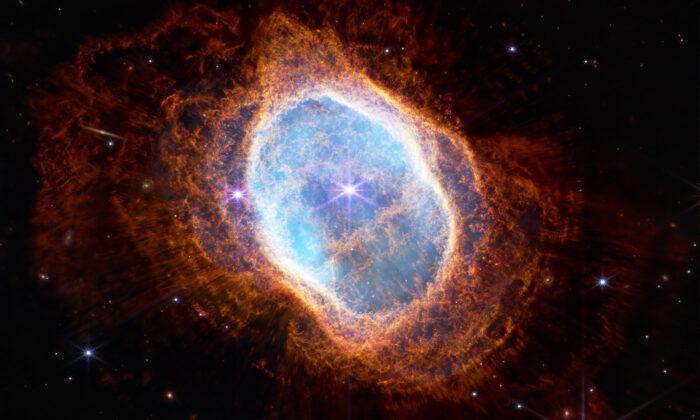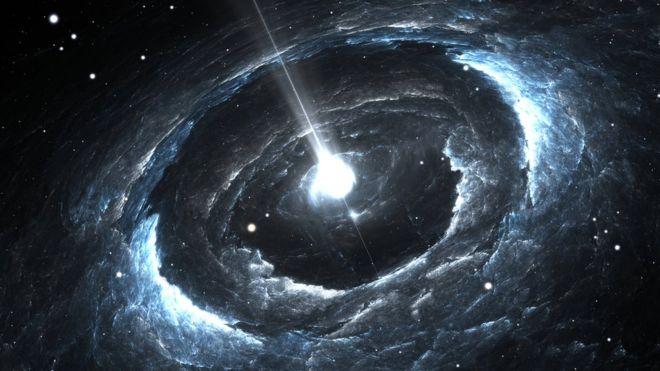“There are many, many, many worlds branching out at each moment you become aware of your environment and then make a choice.” -Kevin MichelGoing from the exterior to the interior of any particle, one discovers a whole new reality. Every cell has its own components, just like the one next to it, functioning in parallel. This continues until we reach the tiniest particle available to our knowledge (at the moment, quarks).
But the existence of a cell or an atom has far preceded our understanding of it.
Similarly, if we are to reverse this process, going from quarks to what is beyond, is it really so hard to believe that there could be multiple worlds just like ours, existing in parallel, with people and planets and a complete universe? This is where the multiverse theory comes in.
It could be that our universe is a part of a much grander and larger universe, a megaverse.
The multiverse theory suggests that our universe, with all its hundreds of billions of galaxies and countless stars, spanning tens of billions of light years, may not be the only one.
Each Expanse With Its Own Laws of Physics
The concept of a multiverse arises from physics and philosophy, and the most prominent explanation comes from the “inflation theory.”According to NASA, inflation theory describes a hypothetical event that occurred when our universe was very young, less than a second old. In an incredibly brief amount of time, the universe underwent a period of rapid expansion: “inflating” to become many orders of magnitude larger than its previous size.
He also mentions that “Inflation does not end everywhere at the same time. It is possible that as inflation ends in some region, it continues in another. Now in this ongoing inflation scenario, each universe would emerge with its own laws of physics, its own group of particles and their respective forces.”
Are These Universes Far Away, or Right Here?
The root of the “many world” theories come from mathematics, and as you may know already, anything that’s mathematically proven is considered accurate (real). Ideas of the parallel universe are often based on quantum mechanics, where multiple states of existence for n number of particles are all possible at the same time, like “wave function.”But for our physicists and researchers of the multiverse, if a theory is without observational evidence, it is naturally declared void. So, for many, the mystery of the multiverse will remain the Schrödinger’s cat.
Similarly, the wave function is a complex quantum state of an isolated quantum system, which suggests, in simple terms, that the cat’s either alive or dead. It accepts both scenarios. But in reality, a cat can’t be both alive and dead unless the cat’s alive in our space while dead in another, or vice versa.
The “many world” theory proposes that each time a state or an outcome is observed, there exists another ‘world’ in which a different quantum outcome becomes reality. As this continues, it creates a branching arrangement giving rise to infinite alternatives.
What Does a Multiverse Explain?
Some credit the idea of infinite worlds to the pre-Socratic Greek philosopher Anaximander in the 6th century BCE. As per historical records, the first to be attributed to the concept of innumerable worlds were the ancient Greek atomists, marked by Leucippus and Democritus in the 5th century BCE. Philosopher Chrysippus later suggested that the world eternally expired and regenerated, effectively suggesting the existence of multiple universes across time.American philosopher William James coined the specific term “multiverse” in 1895 not in a cosmological context but in reference to his view of the natural world. In the 20th century, the use of the word became more popular in a range of areas including cosmology, religion, philosophy, and psychology.
In his latest book, “The Number of the Heavens” science journalist Tom Seigfried explores how the idea of the multiverse has evolved over millennia.
“We cannot explain all the features of our universe if there’s only one of them,” he writes. In this book, he raises some curious questions like “why are the fundamental constants of nature what they are? Why is there enough time in our universe to make stars and planets? Why do stars shine the way they do, with just the right amount of energy? All of those things are questions we don’t have answers for in our physical theories.”
According to him, there could only be two explanations: That we need more agreeable theories (with evidence) to explain the properties of our universe. Or, he says, it’s possible that “we’re just one of many universes that are different, and we live in the one that’s nice and comfortable.”
In similar lines, physicist Andrei Linde says “Our understanding of reality is not complete, by far. Reality exists independently of us.”
Believe it or not, there are definitely phenomena that are beyond us and far beyond science that keeps our scientific community busy and chasing. Makes us wonder if the default view of materialism, that nothing is but matter, has contributed to our positive development or if it has set us completely off-course and left us entangled in “reality,” missing everything underneath it.
It’s something to think about for the next time you have a dream where you see yourself in a slightly or wildly different setting. Could that be you in another time space, or is it just silly dreaming?






